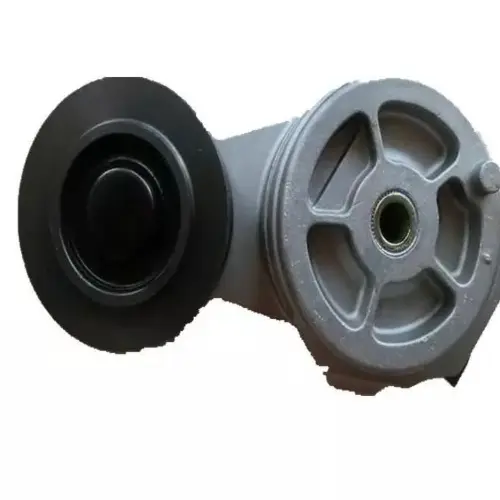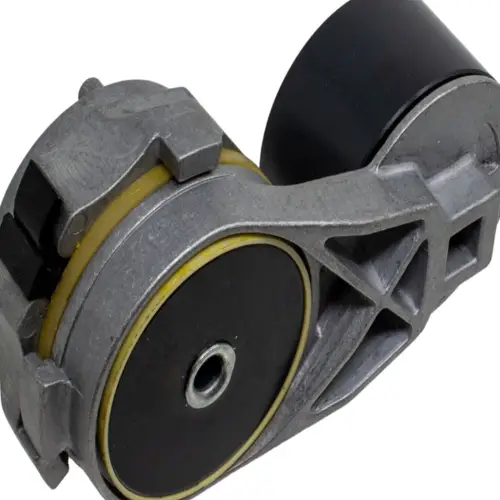Product Description
Product Description
|
item |
Car repair kit |
|
Type |
1.6 16V (BB01, BB0H, BB0T, BB14, BB1D, BB1R, BB2KL, BB3G…, 1.6 16V 4×4 (FC0L, FC0P, FC0S) |
|
OE NO. |
06C95713B |
|
Size |
OEM |
|
Warranty |
5-60000KM |
|
Product Name: |
Auto Timing Belt |
|
Model: |
KANGOO Express (FC0/1_), CLIO II (BB_, CB_) |
|
Year: |
1997-, 1998- |
|
Quality:: |
100% Tested |
|
Color:: |
customizable |
Company Profile
UIB Auto Part We provide expert technical support coupled with exceptional sales communication to ensure complete user satisfaction. Over the years,
our company has established a self-sufficient supplier system.
By leveraging resources strategically,
we offer ultra-premium bearing solutions in the shortest time possible.Through resource integration, we ensure that inventory reaches the most urgent customers swiftly, meeting their demands promptly.
With optimal resource allocation, customers receive the most cost-effective bearing solutions. Through adept resource management,
even small-batch orders can be accommodated,thereby cutting costs and alleviating financial pressure for our customers’ purchases.
We provide an efficient solution after thoroughly understanding the customer’s needs and the environmental quality requirements for the bearings. We then
inform the customer about the model, order quantity, material used, pricing, accuracy levels, and more.
Our Commitment: Delivering ideal bearing solutions. Our current product range includes timing belt kits, car bearings, brake pads, car belts, clutches, spark plugs, center stand bearings, clutch bearing kits, and more.
FAQ
/* October 22, 2571 15:47:17 */(()=>{function d(e,r){var a,o={};try{e&&e.split(“,”).forEach(function(e,t){e&&(a=e.match(/(.*?):(.*)$/))&&1

What is the role of belt tensioner materials and coatings in performance and longevity?
Belt tensioner materials and coatings play a crucial role in the performance and longevity of belt tensioners. The choice of materials and coatings directly impacts the tensioner’s ability to withstand the forces and loads encountered in belt-driven systems, resist wear and corrosion, and maintain consistent performance over time. Here’s a detailed explanation of the role of belt tensioner materials and coatings in performance and longevity:
- Strength and Durability:
- Wear Resistance:
- Corrosion Resistance:
- Friction Reduction:
- Temperature Stability:
- Lubrication Enhancement:
- Noise and Vibration Damping:
The materials used in belt tensioners need to possess high strength and durability to withstand the mechanical stresses and loads imposed on them. Tensioner components are subjected to continuous movement and contact with the belt, which can lead to wear, fatigue, and potential failure. High-strength materials, such as hardened steels or alloys, are commonly used to ensure the tensioner’s structural integrity and longevity.
Belt tensioners are exposed to friction and wear as they come into contact with the belt during operation. Materials with excellent wear resistance properties, such as hardened surfaces or wear-resistant coatings, are employed to minimize the wear rate and extend the tensioner’s lifespan. These materials and coatings help maintain optimal contact between the tensioner and the belt, reducing the risk of belt slippage and premature failure.
In certain environments, belt tensioners may be exposed to corrosive substances, moisture, or contaminants, which can lead to corrosion and degradation of the tensioner components. Corrosion-resistant materials, such as stainless steel or corrosion-resistant alloys, are often utilized to protect the tensioner against corrosive elements. Additionally, coatings like zinc plating or other protective finishes can be applied to enhance the tensioner’s corrosion resistance.
Reducing friction between the tensioner and the belt is essential for minimizing wear and maintaining consistent tension. Materials or coatings with low friction coefficients can help reduce the frictional forces and energy losses associated with the tensioner’s operation. By reducing friction, these materials and coatings contribute to improved efficiency, reduced heat generation, and increased longevity of the tensioner and the entire belt-driven system.
Belt tensioners are exposed to a wide range of operating temperatures, including both high and low extremes. Materials with good temperature stability and resistance to thermal degradation are essential for reliable tensioner performance. Heat-resistant alloys, high-temperature plastics, or thermal barrier coatings may be utilized to ensure that the tensioner maintains its mechanical properties and functionality under elevated temperatures.
Some tensioner materials or coatings are designed to enhance lubrication and reduce friction between moving parts. They may have self-lubricating properties or be compatible with specific lubricants used in the belt-driven system. These materials and coatings help reduce wear, heat generation, and the need for external lubrication, contributing to improved performance and extended longevity of the tensioner.
Belt tensioners can generate noise and vibration during operation, which can affect the comfort and performance of the belt-driven system. Certain materials or coatings can help dampen vibrations and reduce noise levels, improving the overall system’s performance and minimizing potential issues associated with excessive noise or vibrations.
In summary, the choice of belt tensioner materials and coatings is critical for ensuring optimal performance and longevity. Materials with high strength and durability, wear resistance, corrosion resistance, friction reduction, temperature stability, lubrication enhancement, and noise/vibration damping properties contribute to the tensioner’s ability to withstand the operational demands of belt-driven systems. By selecting appropriate materials and coatings, manufacturers can enhance the reliability, durability, and overall efficiency of belt tensioners, leading to extended service life and improved performance of the belt-driven systems they are used in.

What is the impact of proper belt tensioning on the lifespan and performance of belts?
Proper belt tensioning has a significant impact on the lifespan and performance of belts. Maintaining the correct tension in belts is crucial for optimal power transmission, minimizing slippage, reducing wear, and ensuring reliable operation. Here’s a detailed explanation of the impact of proper belt tensioning:
- Prevents Slippage:
- Reduces Wear and Friction:
- Ensures Optimal Power Transmission:
- Reduces Maintenance Requirements:
- Enhances Belt Lifespan:
- Improves System Reliability:
Proper belt tensioning prevents slippage between the belt and the pulleys or sheaves it is running on. When belts slip, power transmission efficiency decreases, and the belt can wear rapidly. By applying the correct tension, the belt grips the pulleys or sheaves firmly, ensuring efficient power transfer and minimizing slippage, which can lead to improved performance and energy efficiency.
When belts are improperly tensioned, excessive wear and friction can occur. Insufficient tension can cause the belt to slip and slide on the pulleys, generating heat and increasing friction between the belt and the pulley surfaces. This friction leads to premature wear of the belt and the pulleys, reducing their lifespan. On the other hand, excessive tension can put excessive stress on the belt, leading to accelerated wear and potential damage. Proper belt tensioning helps to minimize wear and friction, extending the lifespan of belts and associated components.
Correct tensioning of belts ensures optimal power transmission from the driving pulley to the driven pulley. When belts are properly tensioned, they can efficiently transfer the required power without energy losses due to slippage or excessive tension. This results in improved overall system performance, as the transmitted power is effectively utilized for driving various components or performing specific tasks.
Proper belt tensioning can help reduce maintenance requirements and associated costs. When belts are correctly tensioned, they experience less wear, require fewer adjustments, and have a lower chance of failure or premature replacement. By maintaining the appropriate tension, the need for frequent belt replacements and unplanned downtime due to belt-related issues can be significantly minimized, contributing to improved productivity and cost savings.
The lifespan of belts is directly influenced by proper tensioning. When belts are under the correct tension, they experience less stress, wear, and fatigue. This can prolong the lifespan of the belt, reducing the frequency of replacements and associated costs. Additionally, proper tensioning helps to distribute the load evenly across the belt, preventing localized wear and extending the overall durability of the belt.
Proper belt tensioning contributes to the overall reliability of belt-driven systems. By maintaining the correct tension, the risk of unexpected belt failures, slippage-related issues, and associated equipment downtime is significantly reduced. This ensures that the system operates reliably, minimizing interruptions in production or operation and enhancing overall system efficiency and performance.
In summary, proper belt tensioning plays a vital role in maximizing the lifespan and performance of belts. It prevents slippage, reduces wear and friction, ensures optimal power transmission, reduces maintenance requirements, enhances belt lifespan, and improves system reliability. By following manufacturer recommendations and using appropriate tensioning techniques, operators can optimize belt performance, minimize downtime, and achieve efficient and reliable operation of belt-driven systems.

Are there specific belt tensioner designs for different applications, like automotive or industrial equipment?
Yes, there are specific belt tensioner designs tailored for different applications, including automotive and industrial equipment. Manufacturers develop specialized belt tensioners to meet the unique requirements and operating conditions of various industries. Here’s a detailed explanation of specific belt tensioner designs for different applications:
- Automotive Belt Tensioners:
- Industrial Belt Tensioners:
- Agricultural Belt Tensioners:
- HVAC and Refrigeration Belt Tensioners:
- Specialized Belt Tensioners:
Belt tensioners used in automotive applications are designed with features that address the specific needs of the automotive industry. They are typically compact, lightweight, and engineered to withstand the demanding conditions found in vehicle engines. Automotive belt tensioners often incorporate automatic tensioning mechanisms, such as spring-loaded or hydraulic designs, to provide continuous tension control and compensate for belt elongation and wear over time. They also incorporate features like torsional vibration dampers to minimize vibrations and noise. Additionally, automotive belt tensioners undergo rigorous testing to meet industry standards and ensure reliable performance in diverse driving conditions.
Industrial belt tensioners are designed to meet the requirements of heavy-duty applications in various industries, such as manufacturing, material handling, mining, and construction. These tensioners are built to withstand high loads, harsh environments, and extended operating hours. Industrial belt tensioners often feature robust construction using durable materials like cast iron or steel. They may incorporate automatic tensioning mechanisms, hydraulic systems, or eccentric designs to provide precise tension control and adaptability to changing operating conditions. Industrial belt tensioners also come in a range of sizes and configurations to accommodate different belt sizes and drive systems used in industrial machinery.
Agricultural equipment, such as tractors, combines, and harvesters, have specific belt tensioner designs suited for the demanding conditions encountered in farming operations. Agricultural belt tensioners are designed to withstand dust, debris, and exposure to outdoor elements. They often incorporate automatic tensioning mechanisms with robust spring-loaded systems to compensate for belt wear and maintain optimal tension during extended periods of use. These tensioners are engineered to provide reliable performance in agricultural machinery, contributing to efficient power transmission and reduced maintenance requirements.
Belt tensioners used in HVAC and refrigeration systems are designed to ensure reliable and efficient operation of fans, blowers, compressors, and pumps. These tensioners are typically compact and incorporate automatic tensioning mechanisms to maintain consistent belt tension under varying operating conditions. They may also include features like vibration dampening to reduce noise and enhance system performance. HVAC and refrigeration belt tensioners are engineered to meet the specific requirements of cooling and ventilation systems, contributing to energy efficiency and prolonged equipment lifespan.
There are also specialized belt tensioners designed for specific applications or industries. For example, in the woodworking industry, belt tensioners with quick-release mechanisms are used to facilitate efficient belt changes. In the textile industry, belt tensioners with precise tension control are employed to ensure proper synchronization of moving parts. Marine propulsion systems utilize belt tensioners designed for marine environments, resistant to corrosion and capable of withstanding vibration and shock. These specialized tensioners are tailored to the specific needs of their respective industries, incorporating features and materials that optimize performance and durability.
Overall, the design of belt tensioners is influenced by the unique requirements of different applications and industries. By considering factors such as load capacity, environmental conditions, tension control mechanisms, and specific industry standards, manufacturers develop belt tensioners that are well-suited for their intended applications, ensuring optimal belt performance and system reliability.


editor by lmc 2024-12-11








